
Andreas Heege und Margret Loder, 2022
Pottery from Lucerne-Ebikon in CERAMICA CH
Marks used by Kunstkeramik Luzern A.G.
A brief company history
17th February 1890: Emil Loder (1890-1971) is born in Brenzikofen, Canton of Bern (family tree).
28th December 1900: After the death of Emil’s father, he and his two brothers, Ernst and Walter, are sent to live with and work for his cousin Karl Loder-Eyer, a potter in Steffisburg.
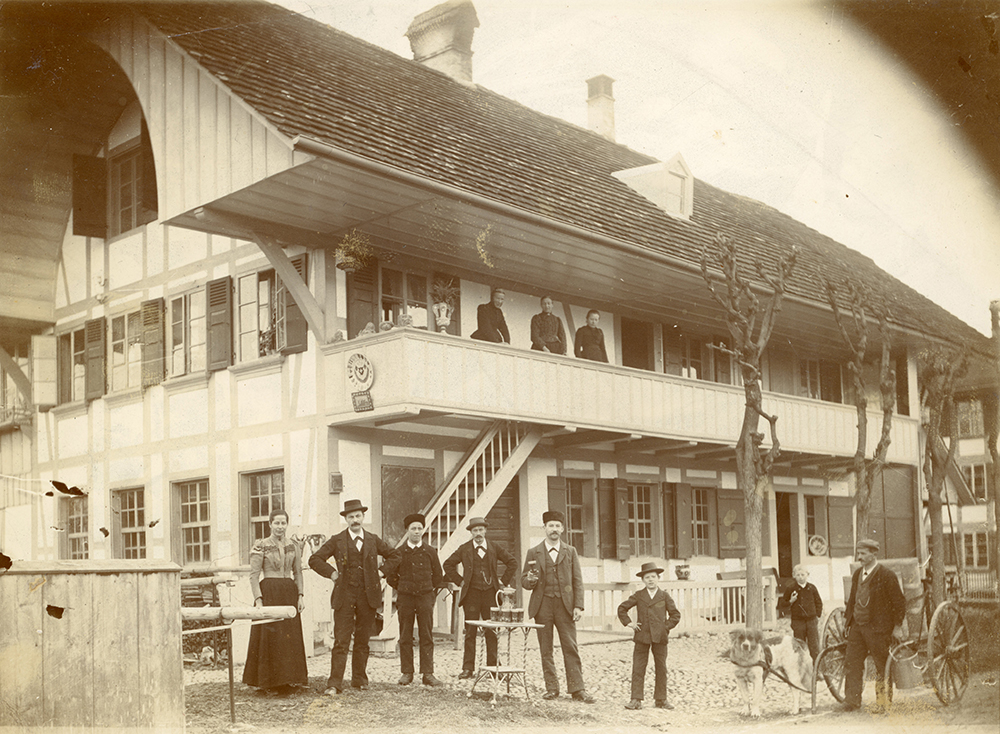
Karl Loder-Eyer’s workshop in Steffisburg.
10th May 1906: Emil Loder begins his apprenticeship with Karl Loder-Eyer.
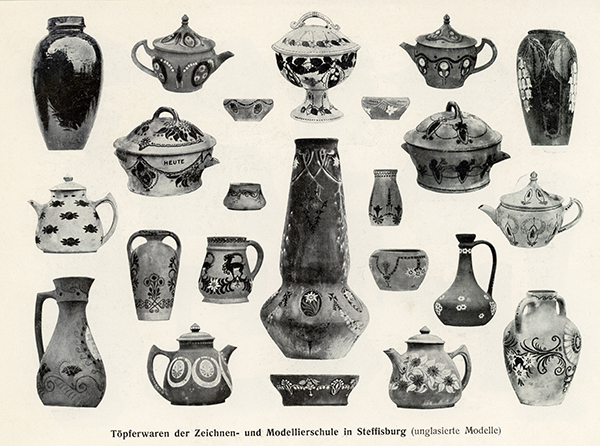
Ceramics made at the School of Ceramics in Steffisburg 1907/1908.
From 1906, he attends the newly founded School of Ceramics in Steffisburg.
1909–1911 Besuch der Keramikfachklasse der Handwerker- und Kunstgewerbeschule Bern, Ausbildung zum Keramikfachlehrer.
1912–1915: Emil Loder’s “journeyman’s years”, during which he is employed at the studio pottery workshop of Friedrich Festersen (1880–1915) in Berlin and various other places. During this time and in subsequent years, he fills a sketch book with pottery shapes and decorative designs (today at the Lucerne State Archive, PA 1421/PLA 202, Kunstkeramik Luzern company archive).
11th May 1915: Karl Loder-Eyer dies and on 20th September 1915, Emil Loder returns to Steffisburg. Emil and his two brothers inherit the workshop but sell it to Karl’s widow, Anna Loder-Eyer, who immediately sells it to a co-operative, which will later become the company DESA in Steffisburg.
Late 1915: Emil Loder joins the Wanzenried Manufactory (possibly as managing director?).
11th December 1918: Emil Loder and Adolf Schweizer become equal partners in purchasing the Wanzenried Manufactory (Loder & Schweizer partnership). Until the end of 1924, they produce characteristic slipped wares decorated in the Art Nouveau and Art Déco styles (photo album of products; today at the Lucerne State Archive, PA 1421/PLA 202, Kunstkeramik Luzern company archive).
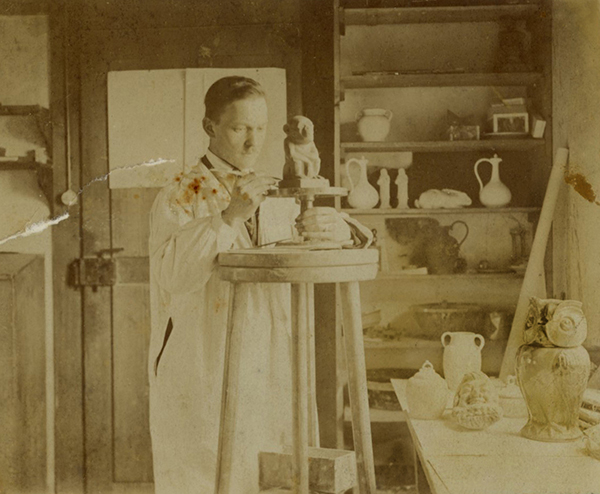
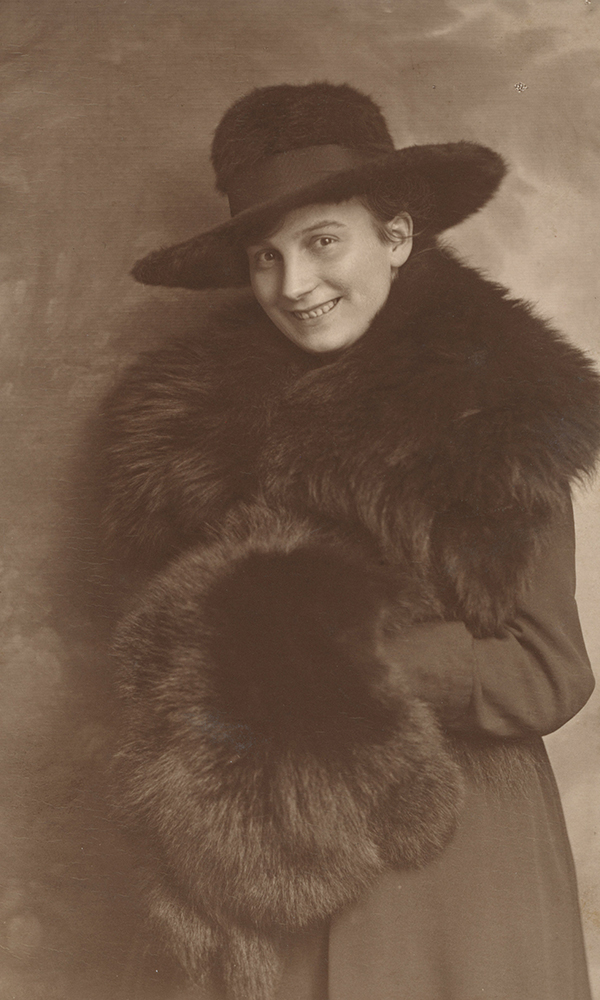
Emil Loder and Frieda Schenk.
1922: Emil Loder meets Frieda Schenk (1900-1972), the daughter of Karl Schenk, a potter and beekeeper from Heimberg.
1924: Emil Loder plans and puts into action (1925) the acquisition of the Lucerne Pottery Association “KeraLuz”, buying the workshop and tools but not the premises itself.
1st March 1925: Dissolution of the Steffisburg partnership “Loder & Schweizer, Kunstkeramik”.
13th March 1925: Emil Loder and Frieda Schenk get married. On 16th April 1925, the couple move to Lucerne. They have a daughter and three sons in 1926, 1927, 1928 and 1932 respectively.

30th March 1925: The company “Loder-Schenk Kunstkeramik” with an address at 30 Maihofstrasse is registered in the Swiss Official Gazette of Commerce, although production has already begun at what used to be the workshop of the Lucerne Pottery Association on 1st February 1925. The workshop has electric potters’ wheels, a wood-fired potter’s kiln and a smaller muffle kiln. A spray booth for slips and glazes is added as early as 1925. Frieda Loder is in charge of the business operation and bookkeeping, the stand at MUBA, the Mustermesse fair in Basel, and together with staff member Thaddäus Rigert, the dispatching of the products.
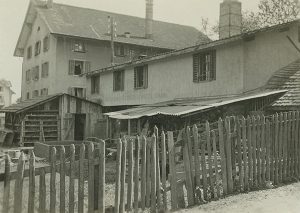
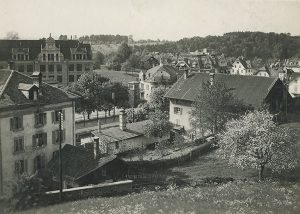
The pottery in the early years around 1925/1930.
1925-1927: Participation at the Mustermesse fair in Basel in the hope of attracting corporate customers including well-known homeware stores in Basel, Bern and Zurich. New shapes and decorations are designed for the new production range (design sheets, c. 1925).
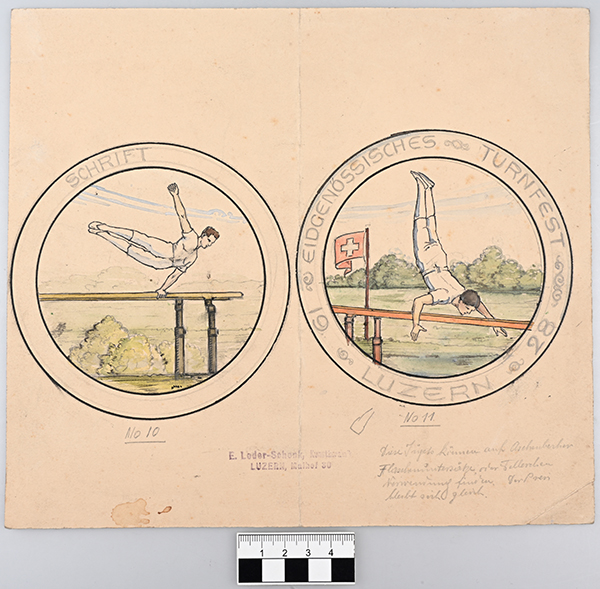
1928: Kunstkeramik Luzern produces honorary gifts and commemorative ceramics for the Swiss Gymnastics Festival in Lucerne. The characteristic type of pottery for associations, competitions, companies, advertising and anniversaries along with pottery decorated with coats of arms develops into one of the company’s more important lines of production.
Using drawings (the first hand-drawn brochure dates from c. 1930/1932) and photographs (first photo album, c. 1931/1932), a travelling saleswoman promotes the company’s products and takes customers’ orders. The production range during that period is a direct reflection of the cultural debate that is ongoing in Switzerland at the time between traditionalism, down-to-earthness and heimatstil (a historicist style of art and architecture) on one side and modernism on the other.
The photo album of 1931/1932 and design sketches that have survived show that the company was taking a close look at 18th and early 19th century Langnau wares and by doing so was making its own contribution towards the creation of the “Alt-Langnau” (Old Langnau) style (see Adolf Gerber’s workshop in Langnau).
25th May to 29th June 1930: The company takes part in an exhibition marking the 25th anniversary of the founding of the Bern School of Ceramics.
1931: Planned construction of an access road (Hünenbergstrasse) affects the location of the workshop.
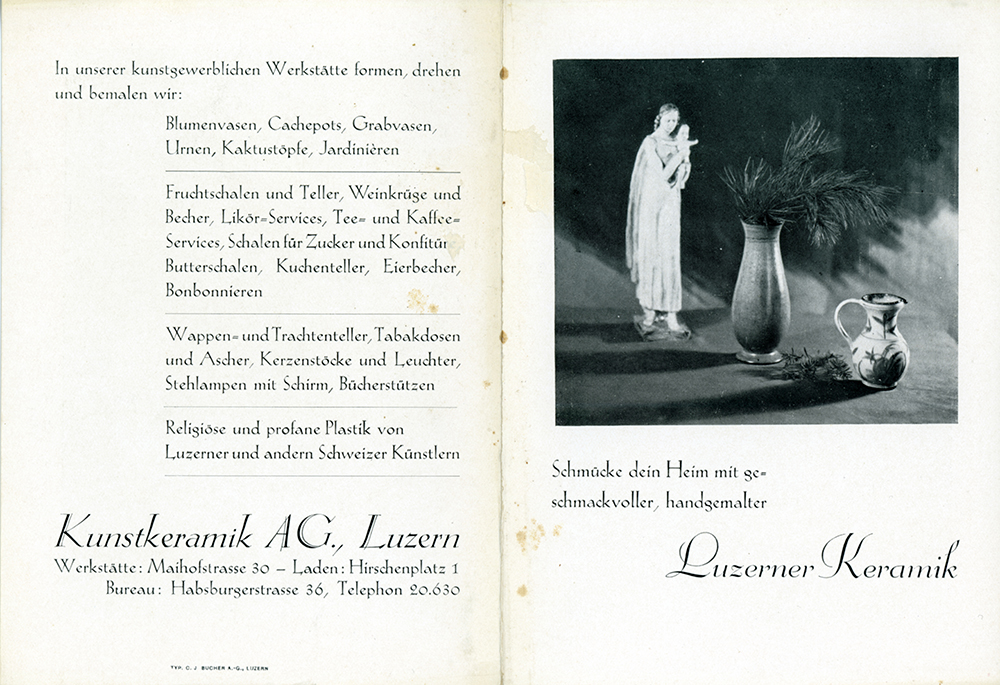

1932: The first printed advertising brochure is published presenting the pottery from 1927 to 1932. The company also begins to collaborate with various local artists: Emil Wiederkehr (1898–1963), Leopold Häfliger (1906–1974), Marc Piccard (1905–1989), Josef Alois Zurkirchen (1912–1996) and Plinio Barzaghi-Cattaneo (1868–1929).
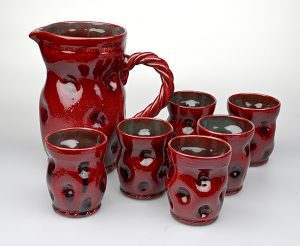
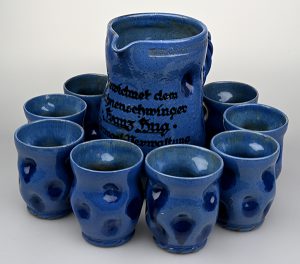
1932: The company produces pottery to commemorate the 600th anniversary of Lucerne joining the Swiss Confederation designed by the Lucerne architect August am Rhyn (1898–1953).
1931/1932: A new systematic catalogue of shapes and price ranges is compiled, initially probably just for internal use. Two later versions of the catalogue with photos and some price ranges (from c. 1945 with added pricing up to 1953) have survived.
Before 1933: A second, smaller muffle kiln is installed.
19th December 1933: The company “Loder-Schenk, Kunstkeramik” becomes the public limited company “Kunstkeramik A.G. Luzern”. Partly because of infrastructural work carried out by the city authorities of Lucerne in the Rankhof area, renovations and alteration work had to be undertaken on the workshop, and Emil Loder needed to raise funds to pay for it. Emil Loder and Frieda Loder-Schenk retained a 30% share in the company.

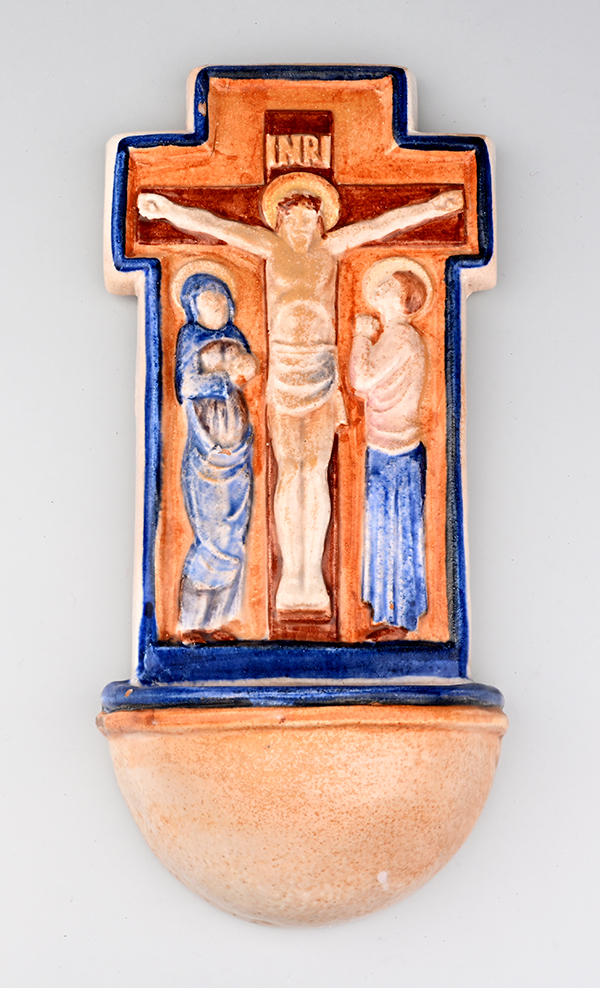
From 1934/1935, the company increasingly produced small religious works of art, including an unknown number of Einsiedeln Madonnas as pilgrims’ souvenirs to mark the millennium celebrations at Einsiedeln Abbey in 1934.
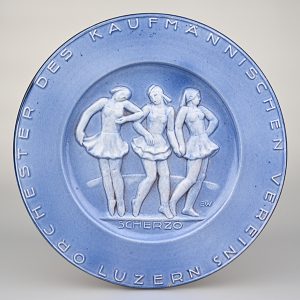
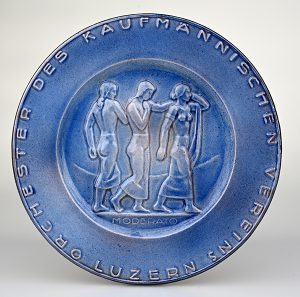
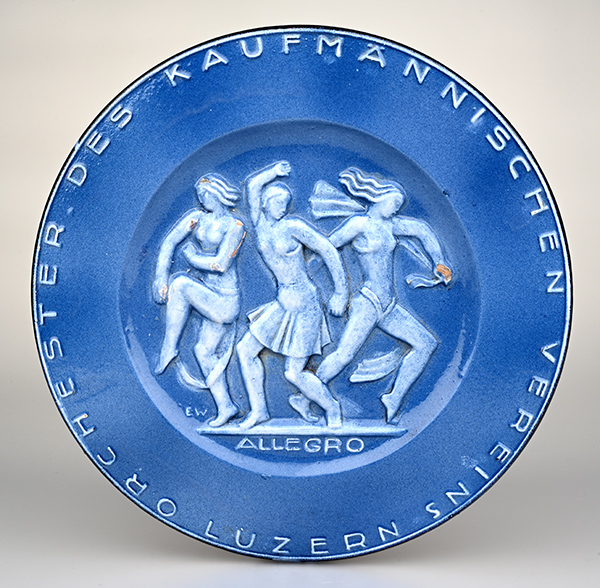
Ceramics commissioned by the “Orchester des Kaufmännischen Vereins Luzern” (Orchestra of the Association of Salespeople), designed by Emil Wiederkehr (1898–1963), 1934.
Collaboration with Emil Wiederkehr (1898‒1963, goldsmith, sculptor and medallist, tutor at Lucerne’s School of Design).
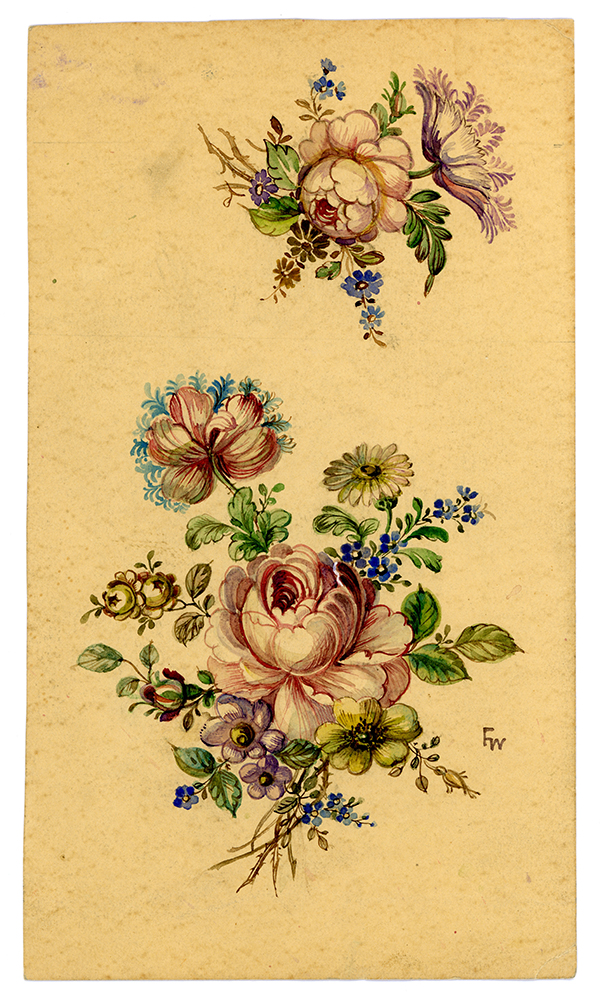
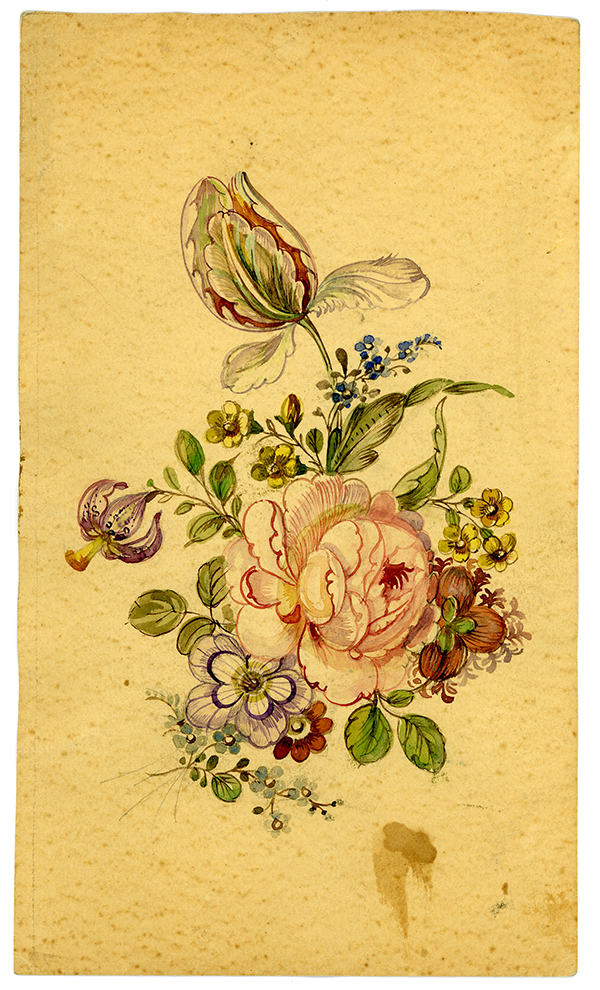
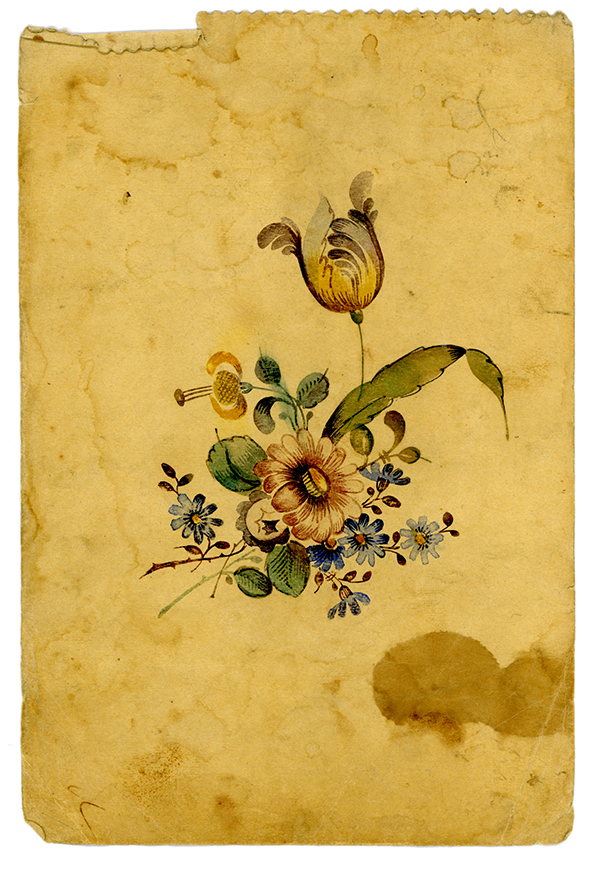
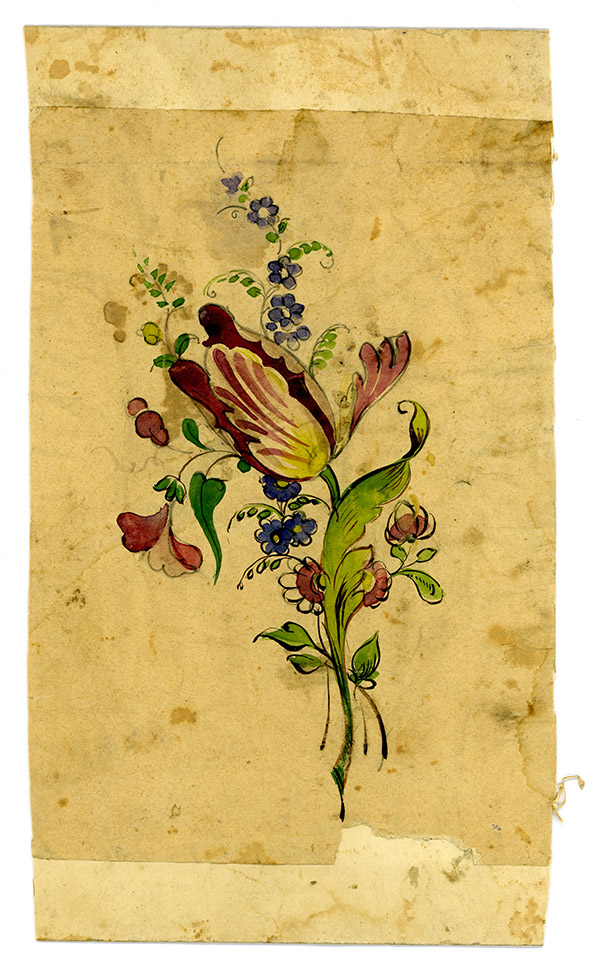
Drafts for the Beromünster design, c. 1934-1940.
1934–1936: A stronger emphasis is put on the traditional and wholesome lines of production, mainly in the form of floral motifs, the “Beromünster” design and numerous commemorative pieces, competitions and commissions from clubs and associations.
In c. 1935, the retail outlet is moved from Hirschenplatz square in Lucerne to the “Passage zum Stein” shopping mall.
1936: Renovation and extension of the workshop at 30 Maihofstrasse.

November/December 1936: Installation of an electric potter’s kiln (chamber volume 0.5 m3) by the company Salvis A.G., Emmenbrücke.
1937: The new “Beromünster” design is reviewed in detail by the press and celebrated as a fine example of “traditional local artisanship”.

1938: Participation at MUBA. New advertising postcard.
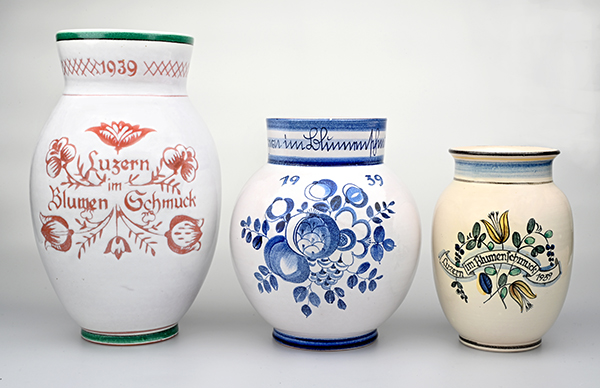
1939: Grand event “Luzern im Blumenschmuck” (Lucerne bedecked with flowers) with numerous vases made by Kunstkeramik Luzern.
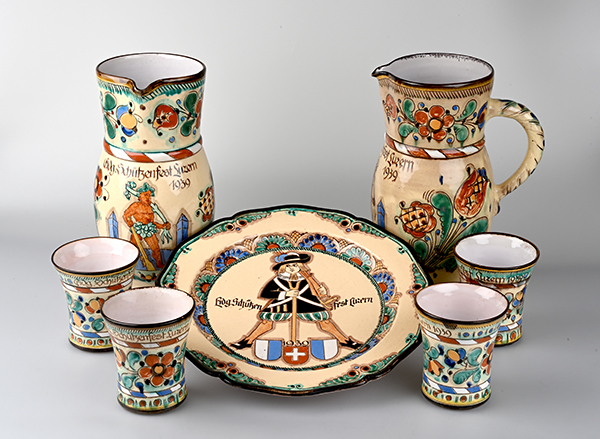
1939: Grand event “Eidgenössisches Schützenfest” (Swiss Marksmen’s Festival) in Lucerne (16th June to 3rd July 1939). The company produces the official festival crockery, the “Brettmeisterkrug” (a jug named after the treasurer of the festival) and a “Schöppli” (a small tankard).
1939: The share capital is increased to 50,000 Swiss francs.
27th November 1941: The company comes under the Federal Factory Law. At this stage, Kunstkeramik Luzern A.G. employs seven male and (only!) three female members of staff, although these numbers may include a combination of several part-time positions. On 29th January 1942, the company has to adhere to factory rules with regular working hours (8¾ hours per day, 6 days per week).
1942: Emil Loder predicts that the company will probably be able to continue production for another 2.5 years, thanks to a timely purchase of raw materials before the outbreak of the Second World War.

Autumn 1942/spring 1943: A storeroom and an office are added to the workshop, and the painting shop is also extended. Probably at the same time, a second electric kiln is installed.
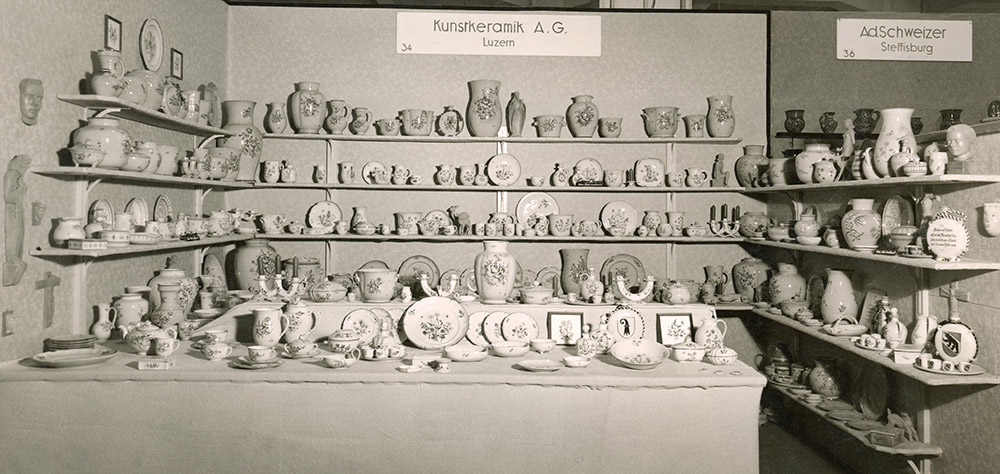
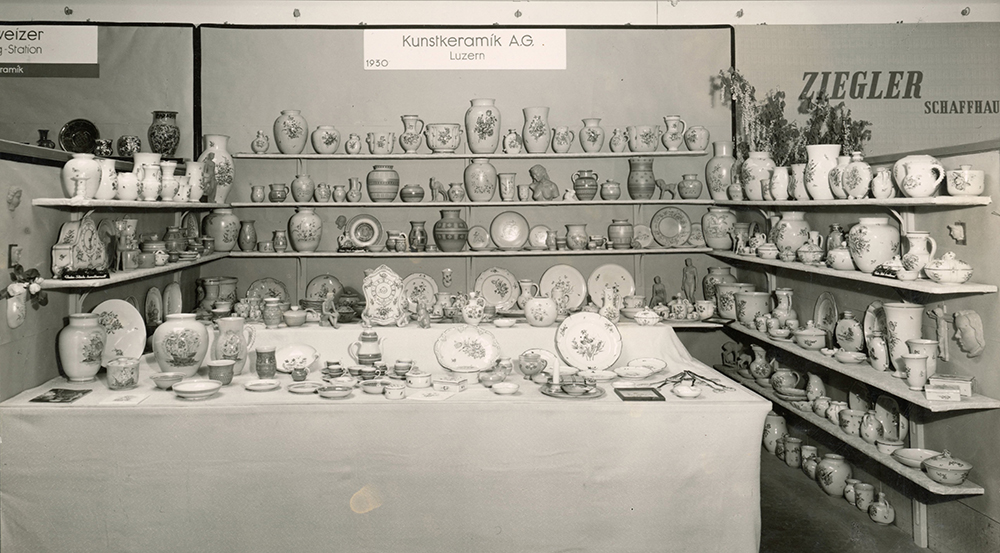
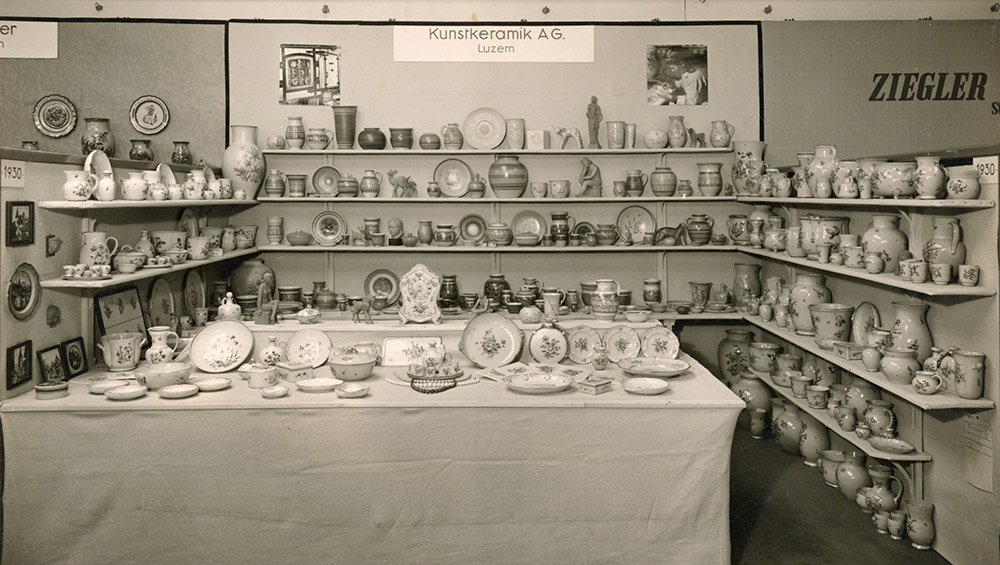
The Kunstkeramik A.G. Luzern booths at the Mustermesse fair in Basel (MUBA) in 1944, 1946 and 1947. The pictures show how dominant the Beromünster design was.
1940-1950: The Beromünster design outperforms all the other ranges, including jugs in the Old Langnau style for marksmen’s festivals, ceramics for clubs and associations, liqueur bottles decorated with “landscapes inspired by Zurich” as well as sculptures and nude figures.
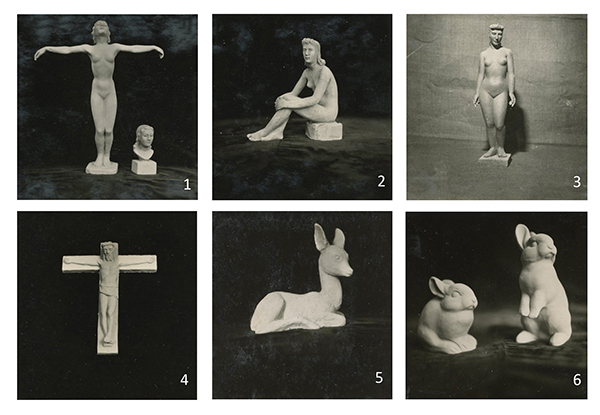
Kunstkeramik A.G. Luzern, various figurines 1945‒1950. 1 Raffael Raffaelli (1917‒1977). 2‒4 Paul Kyburz (1913‒1994). 5 Rolf Brem (1926‒2014). 6 Hans Huggler-Wyss (1877‒1947).
At the same time there were artistic collaborations with Meinrad “Mädi” Zünd (1916–1998), Raffael Raffaelli (1917–1977), Paul Kyburz (1913–1994), Rolf Brem (1926–2014) and Hans Huggler-Wyss (1877–1947). After 1951, statuettes or religious figurines were no longer exhibited at MUBA. The pottery for clubs and associations, the pieces for competitions and the commemorative military ceramics, on the other hand, continued to be produced.
C. 1944/1945: New decorative designs (e. g. the “Apple Blossom” design, the ”Field Flowers” design and the “Scratched plant” design) are created.
C. 1945: Planning for a new company building commences.
13th June 1946: The share capital is increased to 100,000 Swiss francs.
6th/8th October 1947: The share capital is increased to 150,000 Swiss francs and the company headquarters are moved to Ebikon, where a site has been found.
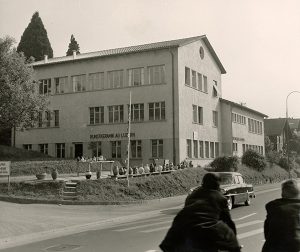
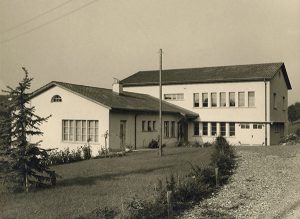
26th June 1948: The new company building designed by the Lucerne architect Anton Mozzatti (1902–1965) is presented to the media. The company is now located at 71 Luzernerstrasse in Ebikon near Lucerne.
1944-1947: Paul Loder (1927–1977), the eldest son of Emil Loder and Frieda Schenk, is training as a potter (thrower) at the Swiss School of Ceramics in Chavannes-près-Renens, Canton of Vaud. Besides working at the new premises, he is attending business school in Lucerne. From December 1951 to August 1952, he receives further training in Beesel north of Maastricht in the Netherlands. Back in his father’s company, Paul begins to reorganise the work process from when an order comes in to when the product is dispatched.
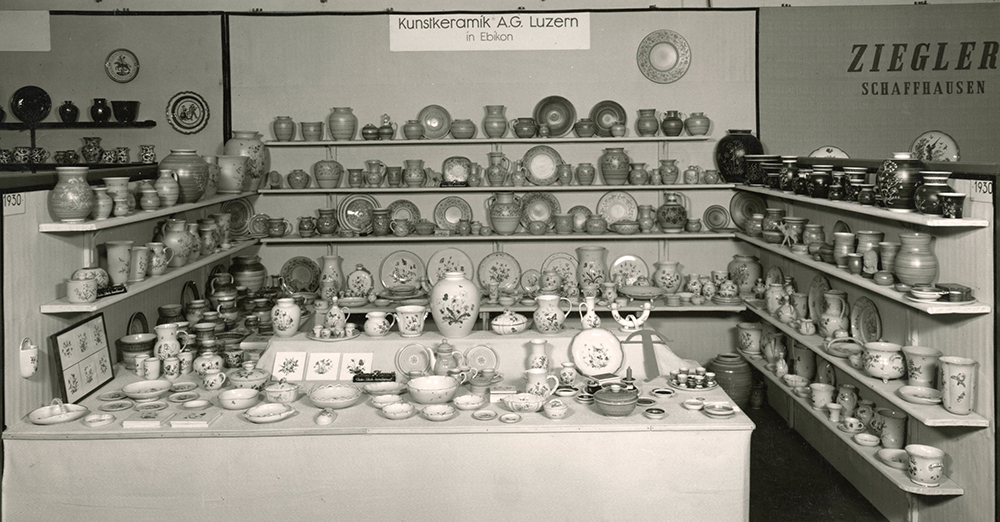
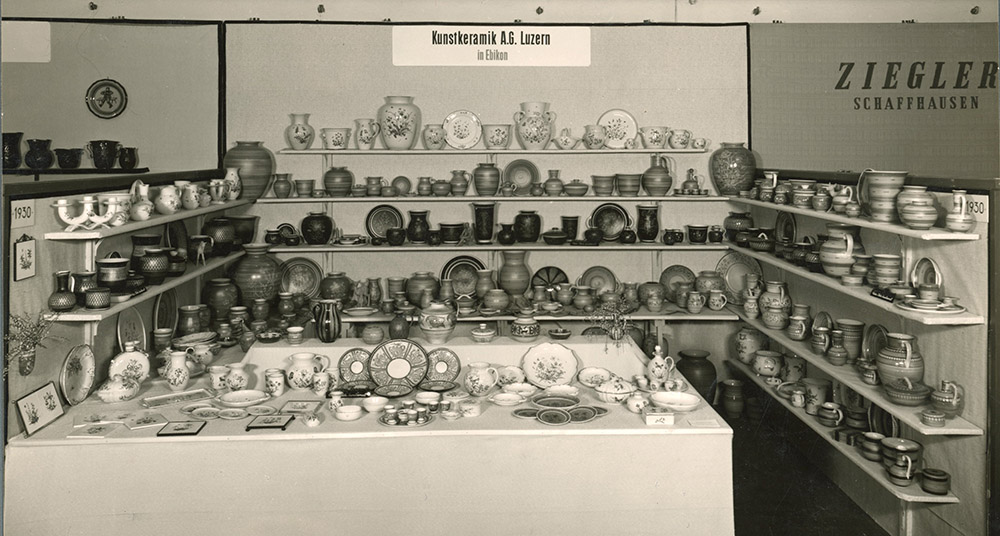
The Kunstkeramik A.G. Luzern booths at the Mustermesse fair in Basel (MUBA) in 1950 and 1951. The pictures show the gradual phasing out of the Beromünster design while the traditional style continues to prevail.
The existing production range continued under Paul’s leadership. New artistic ideas were expected to be conceived by the painters and paintresses (“Field Flowers” design, “Scratched plant” design).
October 1949: An exhibition of Lucerne pottery is staged in the chamber music hall of the Kongresshaus convention centre in Zurich-Seebach, in contrast with porcelain from Rosenthal, Nymphenburg, Meissen, Copeland, Herend and Langenthal.
1948–1951: Franz Loder (1932–2001), the youngest son of Emil Loder and Frieda Schenk, follows in his brother’s footsteps and enrols at the Swiss School of Ceramics in Chavannes-près-Renens in 1948. In the spring semester of 1949, however, he moves to the School of Ceramics in Bern, where he graduates as a pottery painter in early 1951. He subsequently joins his parents’ company. While in Bern, he is taught by two important Bernese ceramicists, Benno Geiger and Werner Burri, who will have an obvious influence on his early works and designs.

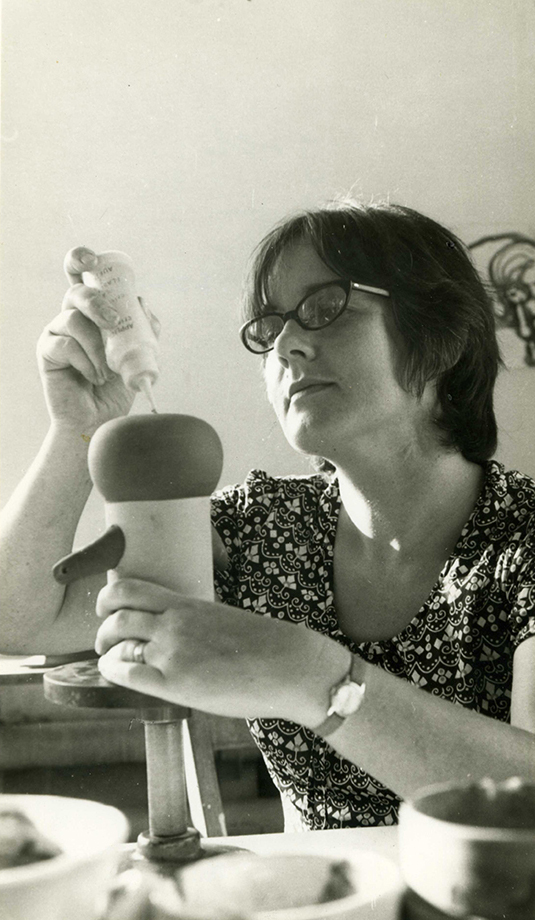
At the School of Ceramics, Franz meets and falls in love with Margret Rettenmund (1932– ).
1948–1951: Margret Rettenmund (1932– ) from Langnau in the Emmental valley, trains as a pottery paintress at the School of Ceramics in Bern. During her training she attends a lengthy work placement at the Stucki-Moser workshop in Wichtrach in the Canton of Bern, followed by a brief placement at the Aedermannsdorf Pottery Factory and then a year at the Meister workshop in Stettbach-Dübendorf near Zurich under Gertrud Meister-Zingg from 30th April 1951 to 28th March 1952. From 15th April 1952 until 31st January 1953, she works as a pottery paintress for Fritz Iseli in Münsingen. Having worked as an au pair in Paris for several months, she is then employed by Jakob Stucki in Langnau. This clearly influences Margret Rettenmund’s early works, as multicoloured slip trailing suits her personal style better than the fine brushwork decorations used in faience painting.
1951: Kunstkeramik Luzern A.G. produces the ceramic murals designed by Alfred Sidler for the new telephone exchange in Lucerne.
From 1951: Franz Loder livens up the traditional production range with his new creations. He introduces new designs, which are also used on the older shapes, thus creating new combinations of shapes and decorations. From 1952/1953 at the latest, Franz is increasingly influencing the appearance of Lucerne pottery. After a period of stylistic and artistic stagnation, his innovation and redesigning of the product range is most welcome. Emil Loder’s old catalogue of shapes continues to be used for a short time in the early 1950s but is then replaced by a workshop card index of all the new designs.
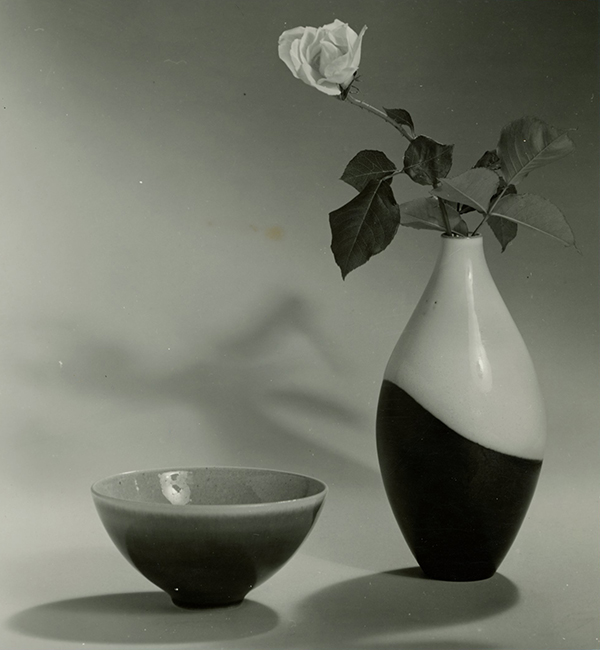
The investments were rewarded at the 1954 MUBA with the “Die gute Form” (The Good Form) prize from the Schweizerischer Werkbund.
December 1952: Franz Loder and Margret Rettenmund display their creations and designs at their first joint exhibition in the Christmas window of the company Manz & Co. in Langnau.
Between 1952/1953 and 1975: The usual ceramics for clubs and associations, anniversaries, competitions and prizes continue to be produced in the old style, though in ever-decreasing numbers.

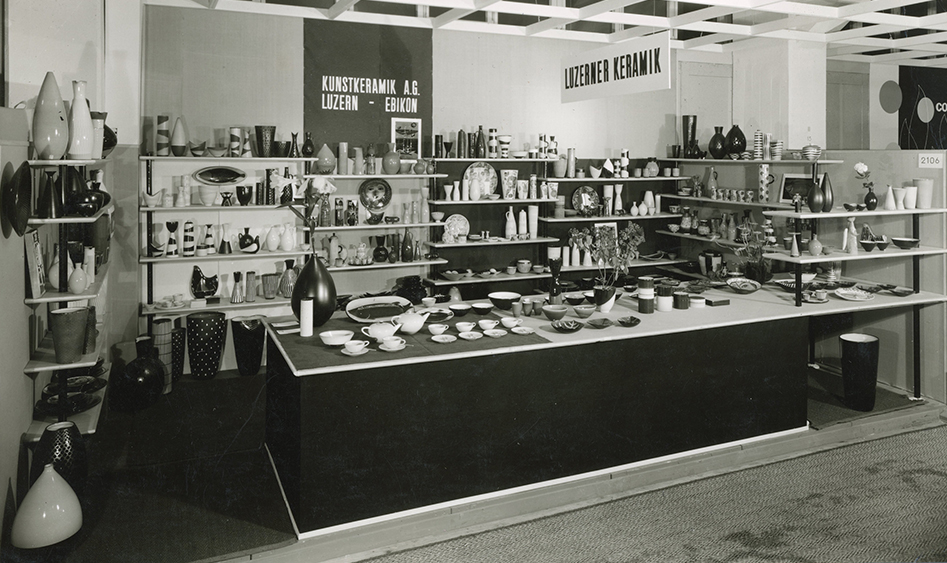 The Kunstkeramik A.G. Luzern booths at the Mustermesse fair in Basel (MUBA) in 1954, 1956 and 1957. The pictures show the radical changes the production range underwent when Franz Loder and Margret Rettemund-Loder joined the company.
The Kunstkeramik A.G. Luzern booths at the Mustermesse fair in Basel (MUBA) in 1954, 1956 and 1957. The pictures show the radical changes the production range underwent when Franz Loder and Margret Rettemund-Loder joined the company.
Between 1953 and 1961, added incised lines play an important role in the decorative designs on the products made by Kunstkeramik A.G. Women’s faces with a Mediterranean look, sea creatures and land- or cityscapes are also included.
1953 to the 1970s: The Lucerne artist Hans Erni (1909–2015) regularly works at the company. Ceramics, bowls and vases are thrown and slipped specifically for him to incise, paint and then sign. They are not marked with the Kunstkeramik A.G. marks.
1st November 1954: Margret Rettenmund joins Kunstkeramik A.G. in Lucerne as a pottery paintress. Besides the works of and training with Geiger and Burri, further training with the ceramicist Mario Mascarin (1901–1966) is very important for Franz Loder and Margret Rettenmund over the following years in developing their own style and vision. Asked what he learnt from his mentors, Franz Loder will later reply: “Levity from Geiger, obstinacy from Burri and moderation from Mascarin”. It is their relationship with Mario Mascarin that leads to Franz Loder and Margret Rettenmund’s first participation in an international exhibition in 1955. Their exhibit at the XIII Concorso Nazionale della Ceramica in Faenza is awarded a silver medal.

Company letterhead used in 1956.
1956: The company fires a large ceramic mural by Hedwig Aregger-Marazzi (1909–1986).
December 1956: Franz Loder and Margret Rettenmund take part in an exhibition of “Modern Swiss Ceramic Artists” at the Museum of Applied Arts in Bern alongside Mario Mascarin, Edouard Chappallaz, Benno Geiger, Fritz Portner, Hanni Krebs-Nencki, Elisabeth Langsch, Bruno Platten, Pierette Favarger, Jakob Stucki and Philippe Lambercy.
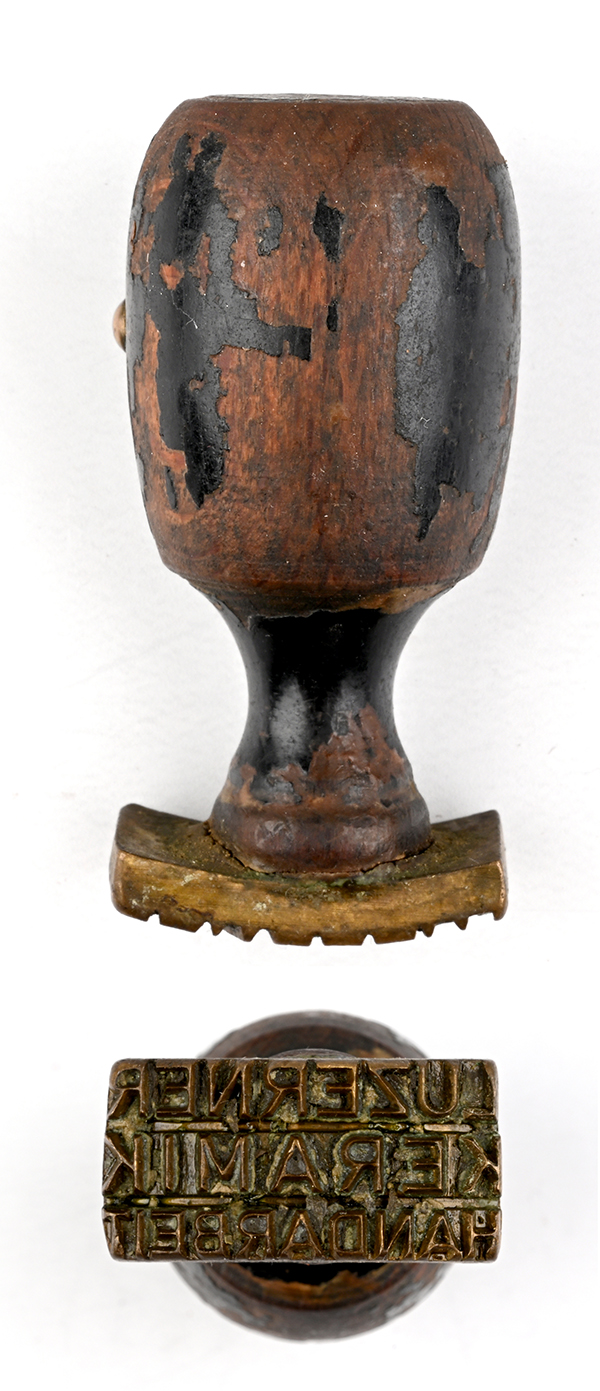
In c. 1956, a new company mark is introduced with the words “LUZERNER KERAMIK HANDARBEIT” (Lucerne Pottery Handmade) on three lines. This is now used to mark most of the products.
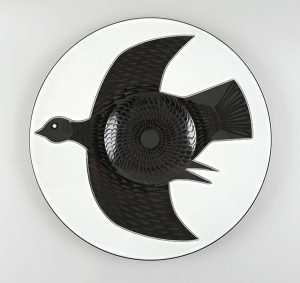
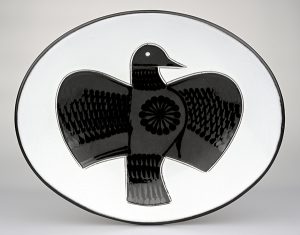
Between 1956 and 1967: Franz Loder creates an expressive series of birds, fish and cats painted in black. They are made by applying glossy drawings inside large mat areas. He also creates other designs that play with the interaction between mat and glossy; the most difficult part from a technical point of view is to distribute the drops of glaze evenly.
27th May 1957: Franz Loder and Margret Rettenmund are married in Lucerne. Over the following years, their children, Andreas, Christian, Kathrin and Annelies are born, while they both continue to work for the company.
After 1952/1953 and 1957: Frieda Loder-Schenk gradually hands over the business side of things, initially to Franz Loder and then to Margret and Franz. In 1965/66 at the latest, Franz effectively becomes the head of operations.
Between 1952/1953 and 1974, the MUBA orders from various major homeware stores and arts boutiques in Switzerland cover the lion’s share of Kunstkeramik A.G.’s production. Worth mentioning here are the Séquin store on Bahnhofstrasse in Zurich, Füglistaller on Freiestrasse in Basel and Steiger in Bern.
From the late 1950s to the early 1970s, a lucrative business is developed in exporting wares to America via the sales outfit Amberg & Hilt, who mainly buy for the company Hudson & Rissman in Los Angeles. Once a year, the Americans would send a colour card which was to be used as a guide to decorate and paint the pottery for the coming season.

1959: Franz Loder, or rather Kunstkeramik A.G., are again presented a “Die Gute Form” prize by MUBA for three of their ceramics on display. This is probably what prompts the Federal Art Commission of the Department of Home Affairs to invite Franz Loder to submit ceramics to two exhibitions, one in Gmunden (Austria), the other in Ostend (Belgium).
Autumn of 1959: On the initiative of Mario Mascarin, various ceramicists join forces to set up the “ASK – Arbeitsgemeinschaft Schweizerischer Keramiker” (Swiss Ceramics Association). Franz and Margret Loder are two of the founding members. It therefore comes as no surprise that we also encounter Franz Loder as one of the exhibitors at the first exhibition of the ASK in Solothurn in 1960, at the XIX Concorso Nazionale della Ceramica in Faenza in 1961, the Exposition internationale de la céramique contemporaine in Prague in 1962, the great ASK exhibition at the Helmhaus in Zurich in 1965, and the special exhibition “3000 Jahre Keramik” (3000 Years of Pottery) at the Museum of Decorative Arts in Zurich.
After 1960: Paul Loder leaves Kunstkeramik A.G. and is employed as a designer by Kristallglas Häfeli in Sarnen and later the glassworks (Glasi) at Hergiswil.
After 1960: Under Margret Loder’s direction, the shop in Lucerne gradually evolves into a retail store for upmarket homewares and interior design with a considerable proportion of the products on offer produced by Kunstkeramik A.G. itself.
1961: Kunstkeramik A.G. exhibits at the Messe Frankfurt fair.

1965 to 1973: Franz Loder makes vessels from a dyed, blackish-brown manganese clay heavily tempered with grog and decorated with either mat or chrome glazes.
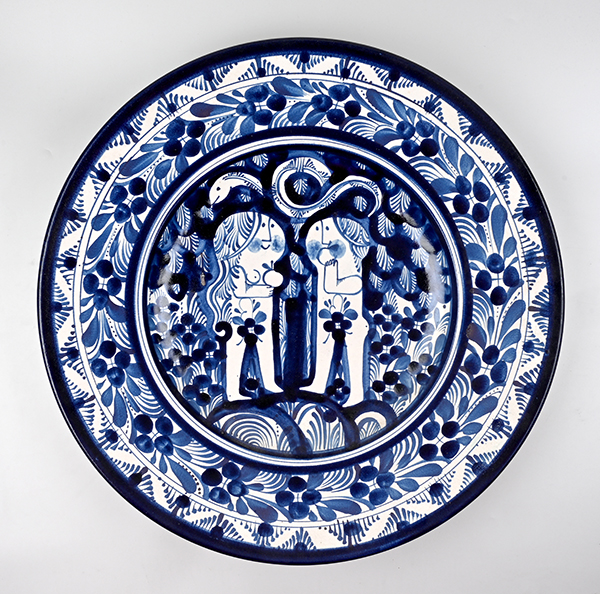
1964 to 1996: The black-and-white, black or chrome green, mat or glossy glazed pottery made by Franz Loder is joined for the first time by a cobalt blue design (“design 210”) developed by Margret Loder. It involves applying blue glaze on a white vitreous glaze using a broad brush and then adding normal faience colours in finer brushstrokes to highlight the areas in between. With its cheerfully naïve and floral decorative patterns, the “design 210”, whose many variants are available in blue, brown and brown-red, remains one of the bestselling lines of production for the company until 1996.
1967: Ceramics designed by Franz Loder are put on display at the Hannover Messe fair. They are a new series of shapes with sharply trimmed edges and decorated with black glossy glazes, sometimes in combination with mat glazes. The series is produced until 1974 and is sometimes glazed in white or mat blue.
10th May 1967: Franz Loder officially replaces the now 77-year-old Emil as managing director and member of the board of directors of Kunstkeramik A.G. In May 1970, he takes on the role of vice-president of the board.

From 1968/1969 at the latest, Franz Loder begins to develop his own exclusive design based on red roses, while continuing to produce large vases with chrome-based glazes.
From 1969: Biscuit-fired caquelons (fondue pots) are bought from the company Heini Landert in Embrach and then decorated with the “design 210” and offered for sale as a component of complete high-quality fondue sets.

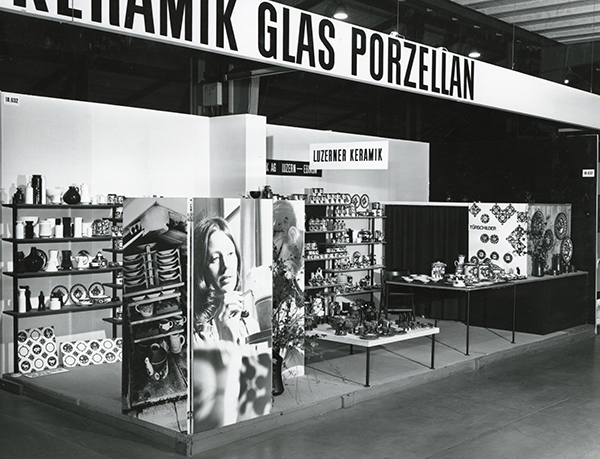
Booths at MUBA 1970 and 1974.
The early 1970s are a period of fundamental change for Kunstkeramik A.G. On 27th December 1971, Emil Loder dies in Lucerne, and Frieda Loder passes away a few months later on 18th March 1972. The 1970s gradually bring an end to the economically trouble-free years. There are various reasons: the oil crisis, the changing style of the MUBA fair and lead-leaching glazes. Along with the devaluation of the dollar between 1971 and the end of the oil crisis in 1973/1974 (25–30% fall in value) the number of American tourists visiting Lucerne drops significantly which leads to a considerable fall in sales for the retail outlet. At the same time, importing ceramics into the US is no longer financially viable for the buyers on the ground who eventually stop ordering.
1974: Kunstkeramik A.G. move from MUBA to the smaller Ornaris fair, which takes place twice a year, once in Bern and once in Zurich, and of which the company is one of the founders. The move proves to be a success and brings a new clientele along with a closer geographic proximity to many of its customers.
1970s-1980s: Numerous ranges of children’s plates, including some decorated by pottery paintress Elsbeth Birnstiel-Marti, are created and become hugely popular.
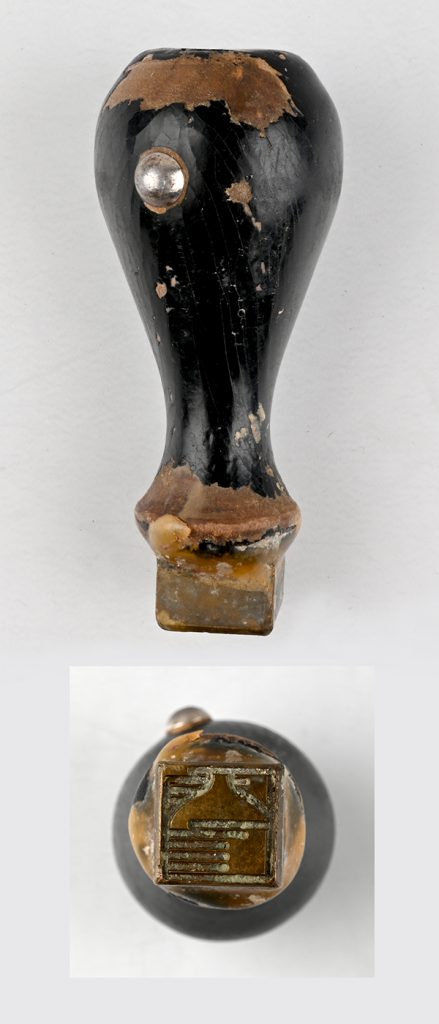
1975: A new workshop mark is introduced alongside the three-word impressed mark and individual stamped marks for Margret and Franz Loder.
1972 to 1975: Problems with lead solubility prompt a gradual move to the development of a second line of production consisting of stoneware made from imported French clay. Experiments are carried out with reduction firing as well as stoneware and tenmoku glazes.
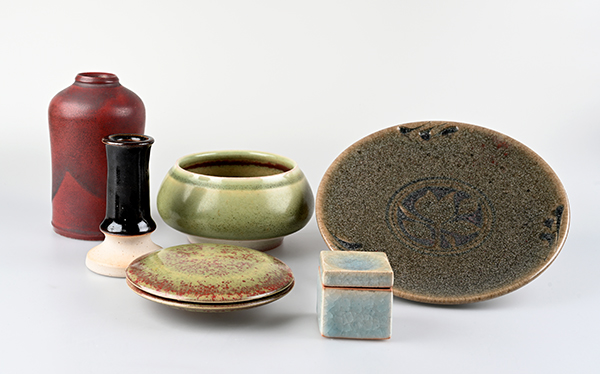
The celadon-type glazes reminiscent of Asian examples, as well as the copper red reduction-fired pieces and the experiments with glazes based on nepheline syenite are particularly impressive. Earthenware continues to be produced, though with different faience glazes (melting glazes).
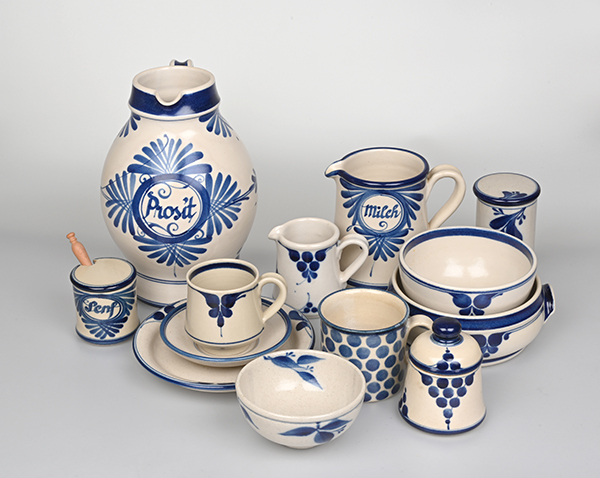
1976: Franz Loder develops and paints a cobalt blue design (“design 241”) on stoneware. The first exhibition of stoneware products is launched in Lucerne.

1981 to 1990: Franz Loder develops and produces the “Naturblatt” (natural leaf) series on stoneware.
3rd to 17th October 1982: The Steinemann Gallery in Rippertschwand-Neuenkirch curates an exhibition of Lucerne pottery to mark Margret and Franz Loder’s 50th birthdays. The press release mentions 17 staff members, among whom the thrower Charles Cavin is singled out as particularly important for the workshop (employed from c. 1955–1985). Franz Loder exhibits works on the theme “experimenting with stoneware glazes”, while Margret Loder displays modelled individual pieces, jesters and jumping jacks, figurative pieces, standing and hanging objects. They also include the first female figures, all of which are individual pieces.
1984: This is the only time Franz Loder experiments with very difficult black and white dyed porcelain pastes.
The second half of the 1980s and the early 1990s are taken up with stoneware ceramics glazed in blues and browns and with images or blank spaces to write a message, which were covered in wax to stop the glaze from adhering to the clay.

1985–1991: Margret Loder develops a limited-edition series of figures that change every year. The first of these figures are “Flora” in 1985 and “Bella” in 1986. In 1987, they, along with a third figure and a stoneware vase by Franz Loder, are sent to an exhibition in Peking-Nanchang curated by the Musée Ariana.
Between 1985 and 1992: Franz Loder creates a series of stoneware vessels with characteristic cut-out or other unusual feet. From 1989 to 1992, these bowls, cups and miniature bowls as well as essential oil burners and elaborately worked teapots have bright red, blue or turquoise striped dipping glazes on a base coat of black glaze.
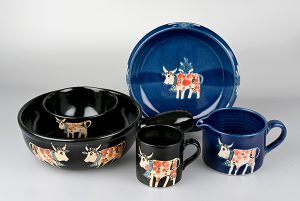
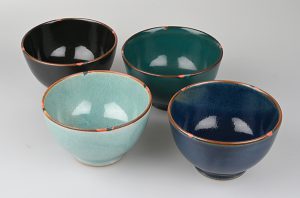
1990-1996: Franz and Margret Loder are finding it increasingly difficult to sell their high-end products on the shrinking Swiss market and try to combat this by creating new shapes and decorations every year, both in the stoneware range and in the colourfully painted faience range. New series of designs and vessel shapes are created at an increasing rate for each Ornaris fair, alongside the more figurative traditional and tourism-driven Swiss decorations with Edelweiss flowers and cows (“Flüela” or “Vroni and Lotti” designs), the playful black and coloured cow design “Fläckli-Swiss” and the understated contemporary polychrome brushwork designs “Flambée” and “Fil”, and from 1995, “Saturn” and “Sky”. At the Ornaris fair in the autumn of 1993, the company is one of ten out of a total of 650 exhibitors to be awarded a prize for the well-designed, rather understated “Fil” design on stoneware.
1991: Kunstkeramik A.G. wins a major contract from the 71st Swiss Gymnastics Festival in Lucerne.
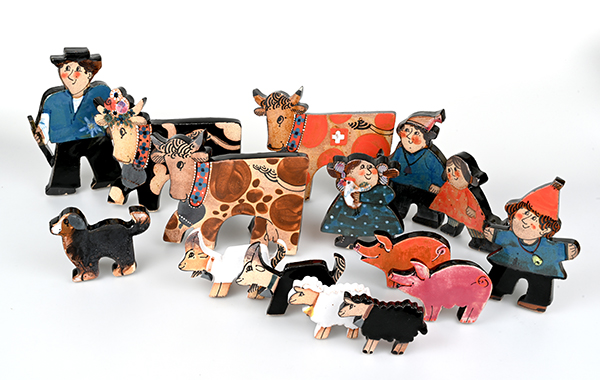
From 1990: A range of angels and nativity sets are created using a slab roller and painted by Margret Loder. Over the following years an entire cattle drive is created, including Heidi and Peter the goat herder, a cheese carter, milkmaids, cows, pigs and goats, a group of yodellers, folk musicians and dancers, Swiss wrestlers and wrestling “kings” (winners) with their prize bulls, and other series in the same style, including cats, fish, snails, birds and garden gnomes.
1st July 1994: Kathrin Loder, who has already been a driving force in the company office, officially replaces her father Franz Loder as managing director. At this stage the company employs only twelve people including two apprentices.
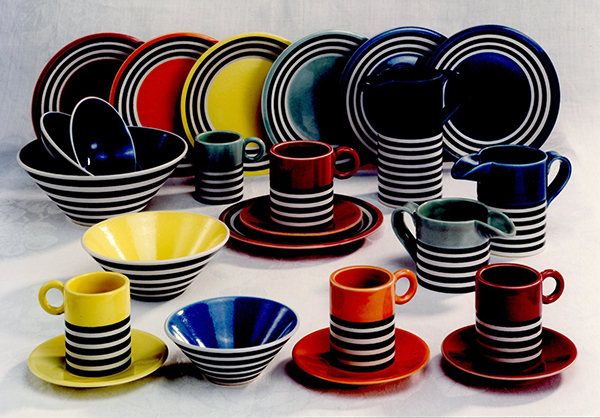
1995: The simple but impressive “Return” design is Franz Loder’s last final series of vessels. At the same time, the company tries to attract new customers in the local area by offering pottery courses for children and adults in 1995 and 1996.

Margret and Franz Loder, 1995.
Margret and Franz Loder, 1995.
28th May 1996: After several years of failing to turn a profit, the general assembly of the Kunstkeramik A.G. decides to cease production on 31st August 1996, 71 years after the founding of the company in Lucerne and 48 years after the move to Ebikon.
25th September 1997: The general assembly begins proceedings to liquidate the company and sell the property. Franz and Margret Loder retire, and new positions are found for all members of staff.
Translation: Sandy Haemmerle
References:
Heege/Loder-Rettenmund/Kistler 2023
Andreas Heege/Margret Loder-Rettenmund/Andreas Kistler, Luzerner Keramik 1925–1996, Teil 1: Loder-Schenk, Luzern, Kunstkeramik (1925–1933) und Kunstkeramik A.G. Luzern (1933–1948), in: Keramik-Freunde der Schweiz Revue 137, 2023, 1-101.
Heege/Loder-Rettenmund/Kistler 2024
Andreas Heege/Margret Loder-Rettenmund/Andreas Kistler, Luzerner Keramik 1925–1996, Teil 2: Kunstkeramik A.G. Luzern in Ebikon (1948-1996), in: Keramik-Freunde der Schweiz Revue 138, 2024, 7-101.

